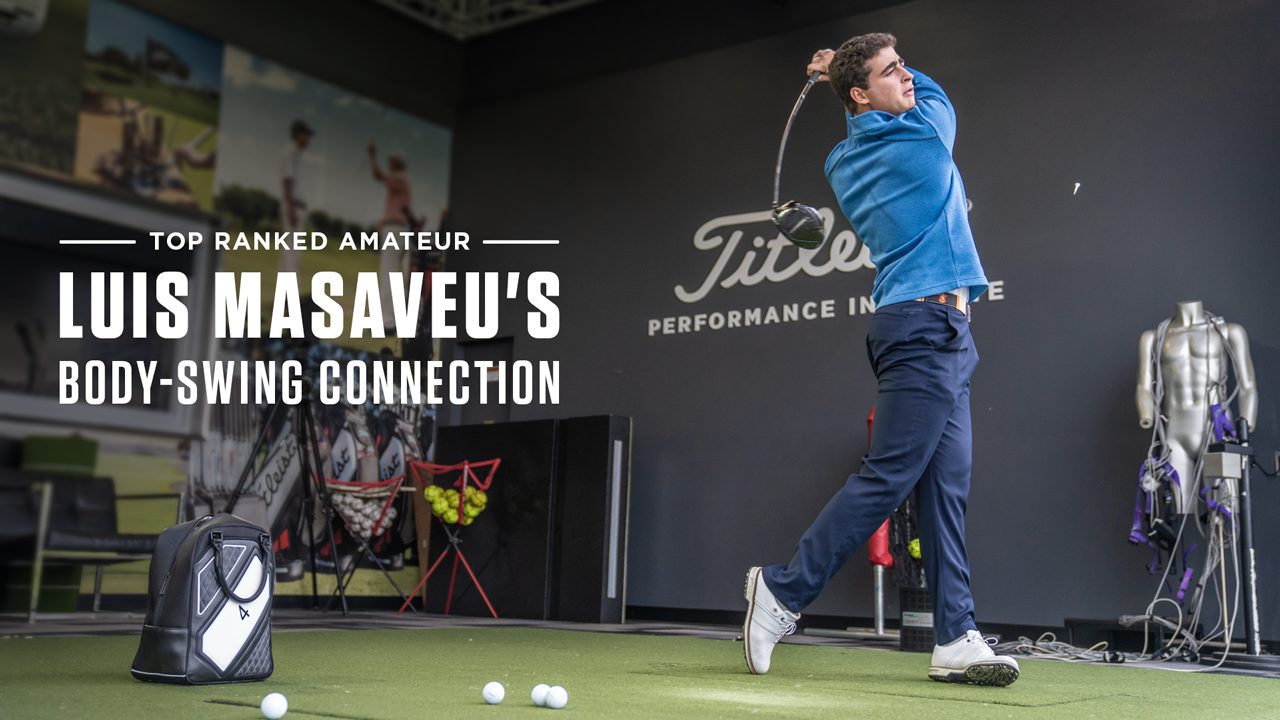IMPROVE MY GAME
Articles
How Movement Capabilities, Injury History and Concept Influenced Swing Mechanics in an Elite Amateur Golfer

One of the reasons we’re adamant about diagnostics is that data can paint a picture of what an athlete is doing and, importantly, can give us some clues as to why. Every assessment tells a story.
We always say that if you want to know WHAT an athlete is doing, look at 3D data and 2D video. If you want to know HOW, look at force and pressure. If you want to know WHY they might be doing that, look at how they are able to move (physical screen).
There are infinite factors that help shape why an athlete swings the way they do, but if we had to group them into the three most common buckets they would be movement capabilities, injury history and mental (or concept).
Our recent assessment with Luis Masaveu, one of the top amateurs in the world, was an example of how all three can influence swing mechanics.
Luis is one of the most talented young golfers in the world, ranked 29th in the WAGR. He came to TPI ahead of one of the most pivotal years of his young career in search of his what, how and why.
Here’s a look at what we found and how his movement screen, injury history and concept informed our recommendations.
Body-Swing Connection: Compensating for Mobility Limitations
Swing characteristics can be purely technical, but they are often the product of how we like to move. Movement patterns tend to be built around physical limitations. We identify physical limitations through the movement screen we teach in our Level 1 Certification course. The screen takes less than 10 minutes, but offers a wealth of information.
Movement screening doesn’t necessarily predict what an athlete will do in their swing, but it can help explain why their swing looks the way it does. For example, a golfer with poor internal hip mobility in their trail leg would seem more likely to sway, but what if they never load into their right side? That would make sense, right? This is what we call a Body-Swing Connection.
Luis’s Body-Swing Connection is pretty logical. He struggled with thoracic and shoulder mobility, especially on his right side. As a result, he had to compensate to get to the top of his backswing, potentially causing him to get across the line.
Not only does he need to train to regain his mobility, he will have to work with his coach to learn to use it in his swing.
Injury History: “Guarding”
Pain is one of the most powerful motivators of movement patterns. If a pattern is painful, the brain often tries to prevent an athlete from moving that way, even after pain is gone. This is referred to as “guarding.”
Most athletes have movement limitations because of a physical restriction, but some have movement limitations because the brain doesn’t want them to move that way, usually as a result of past injury/pain. pic.twitter.com/N1IH0sawWE
— OnBaseU (@OnBaseU) December 7, 2022
In our onboarding interview, Luis mentioned he had suffered a rib cartilage fracture several years prior. This is an extremely painful injury that is aggravated by rotation. Additionally, he’d had a shoulder injury that affected his external rotation.
Luis had worked hard to restore mobility after the injury, but he still had to train his brain to access that mobility. His brain had remembered those movements were painful, so it was discouraging him from moving that way today.
Concept: Right-Hand Steers vs Left-Hand Steers
One of the fascinating revelations from working with Luis was that his trail hand seemed to more dominant than his lead hand in his swing. Around the 8 min mark of the video, Dave and Greg suggested Luis practice one-handed swings to try to identify if one of his hands might be more responsible for him getting across the line. What they found is that his left-hand only swing was laid off, but his right-hand swing was across the line.
While it’s not uncommon for golfers to have completely different feels, most golfers prefer to steer the swing with their lead hand. The trail hand is just a passenger. Luis was the opposite.
This is likely a product of concept. At the 10:10 mark, Greg asks Luis which hand he’d want to let go of the club with during his swing and Luis said his left hand (meaning his right hand would be the only one on the club). In actuality, grip pressure is far greater in the lead hand than the trail hand. We wear a glove on the lead hand, after all.
By trying to be more conscious about letting the lead hand “drive” the swing, our hypothesis is that it might help him to be less across the line and improve his consistency, especially with irons and distance wedges.
As with most elite amateurs we have the opportunity to work with, Luis is not only successful because he works hard, but because of his innate athletic ability. Elite golfers are wildly talented, especially in how they are able to process and apply new information.
Less than a month after his visit to TPI, Luis found himself in the winner's circle. All credit to he and his team.
Most golfers we meet - regardless of ability - don't want swing, training or treatment recommendations to be made on a hunch. They want direction from data. If you're interested in learning more about this assessment process, check out our Level 1 online course. If you'd like to connect with a TPI Certified, visit the find an expert page on our site.